Letters from India II. - Eternal Taj Mahal
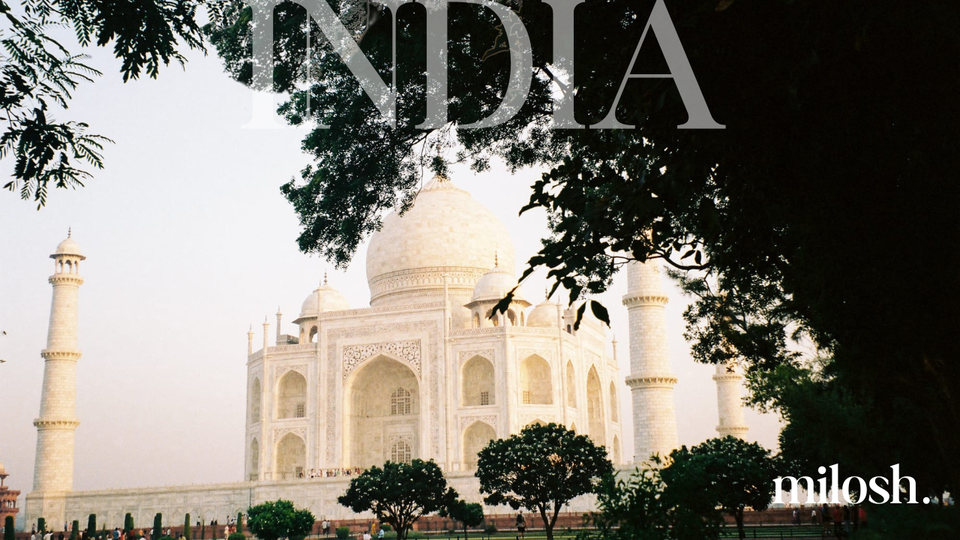
This week's post takes us back to my adventure in India. As we left Delhi, I was content with what I’d seen and experienced in our rather short time there. Unfortunately, Lukas had already picked up some stomach issues. After the initial difficulties with booking the tickets, as I described in the first Letter, we were all set. We discussed which class to choose and settled on the 2nd one. After the initial shock of how crowded the train station was and how difficult it proved to be to find the right platform, we left Delhi with only one goal in mind: catching the next sunset at the Taj Mahal.
The journey from Delhi to Agra, a town close to the Taj Mahal, is a very common travel route. As we found out on the train, many Indians undertake this journey to visit the Taj Mahal at least once in their lifetime. While I had never really started collecting UNESCO heritage sites or world wonders, I was pretty excited knowing that I was on my way to visit my second world wonder (the first being Petra in Jordan). The trains were more comfortable than we had anticipated. We befriended a few families who were on a five-day train ride for their pilgrimage. We quickly became an attraction as more and more people would randomly take seats opposite us and chat about what brought us to India and where we were headed. Some passengers got into heated arguments with the ticket masters and ended up being escorted out, probably because their tickets were not valid for this class.
When we reached Agra, I didn’t quite know what to expect. We had booked a hostel with a beautiful rooftop that offered a sunset view of the Taj Mahal. On our way from the train station, we encountered a charming and outspoken gentleman, our rickshaw rider, Aslan. He wouldn’t stop talking and even managed to say a few words in our native language. As he explained, he keeps a book of all his clients and guests from around the world and always asks them to write something in their native language. That truly made my day. As part of his sales pitch, he offered us his services for the entirety of our stay in Agra at a discounted price. We didn’t have to think twice because reliability is an underrated quality in India. We arrived at our hostel, unpacked, and headed out for a sunset hunt. We decided to visit the Taj Mahal early the next morning, so Aslan advised us to cross the river and watch the sunset from a different perspective.

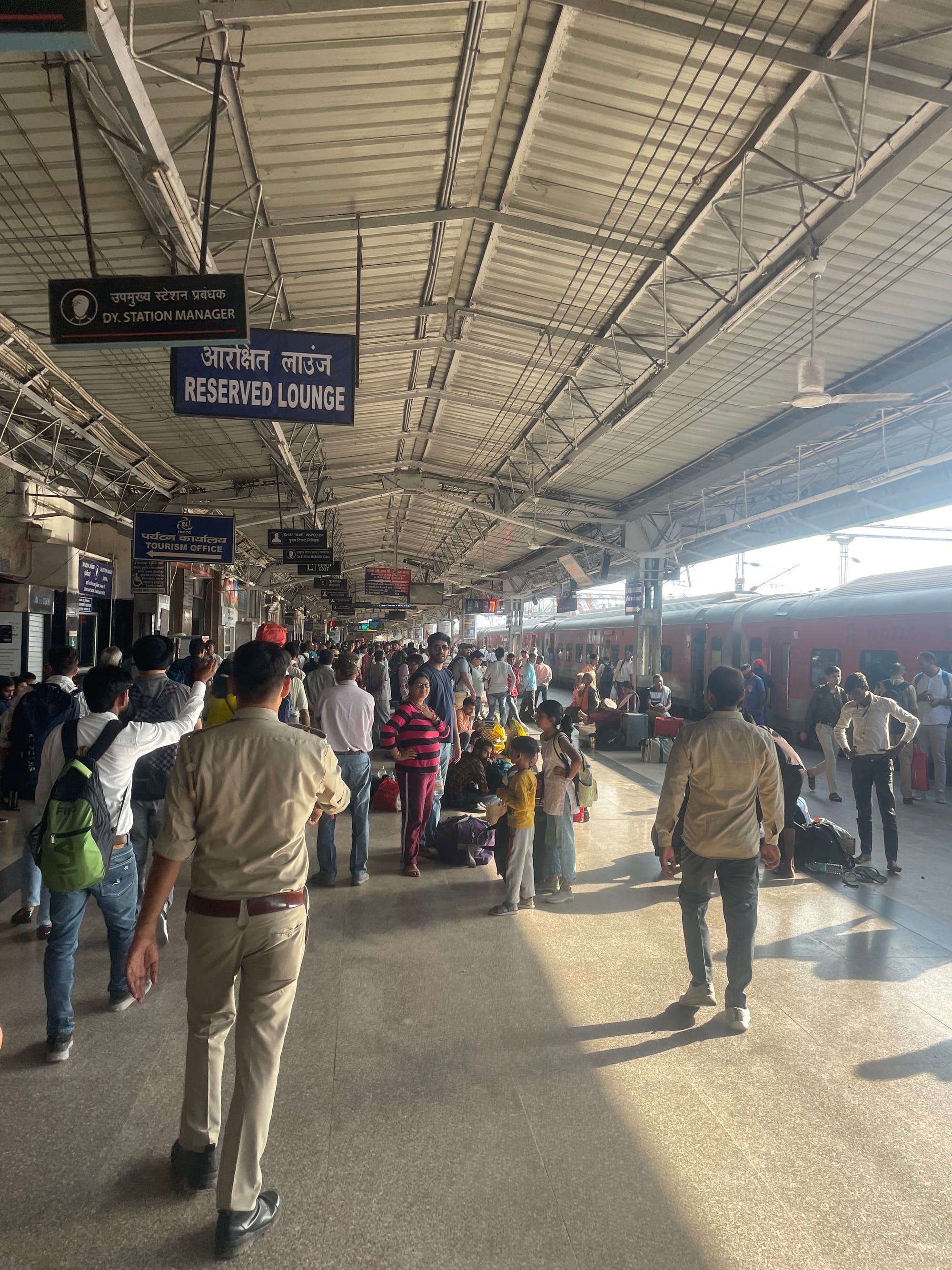

En route Agra.
And oh boy, was it a great decision. I bet many of you have heard of the Taj Mahal, but what you may not know is that this magnificent building is a tomb.
The Taj Mahal is an iconic symbol of love and one of the most famous monuments in the world. It was commissioned by the Mughal Emperor Shah Jahan in 1632 to house the tomb of his beloved wife, Mumtaz Mahal, who died during childbirth. The construction took over 20 years to complete, involving thousands of artisans and craftsmen from across India and beyond. It truly is a testament to the power of love. The entire complex is perfectly symmetrical, with the tomb as its centrepiece, surrounded by beautiful gardens, reflecting pools, and other structures.

Aslan’s view of this monumental building was simply breathtaking, and we were both extremely glad we took his word for it. We spent a few minutes in disbelief, just enjoying the view of this monument. As the sun slowly set above the dry riverbed, we grabbed a ride back with Aslan. He stopped and drove us through Agra, pausing at local markets to help us get some of the best fruits we’d had in a while.
Later that night, we hung out on the rooftop of our hostel with two guys from Delhi/Rajasthan and a bunch of international travellers. Not many words were spoken in the first few hours; instead, we just gazed at the beauty of the place. The two younger local guys had been to the Taj Mahal a few times before. It was through chatting with them, two incredibly bright minds, that I was reminded once again how privileged I am to have the opportunity to travel the world the way I do. One of them mentioned his desire to visit all the states in India before traveling abroad. He was a student at one of India’s top universities. The other was in Agra visiting his local producer, as he was designing a shoe similar to the globally known Birkenstocks. Two entrepreneurial, smart, and hardworking guys. In India—more than anywhere else—I realized how remote work contributes to equal opportunities. Why should your salary be different if you’re working for a global corporation just because of your address? Why do we allow corporations to take advantage of incredible talent from every part of the globe? Those days are slowly fading. While it will take some time, remote work will contribute to wealth distribution and equal opportunities for everyone.

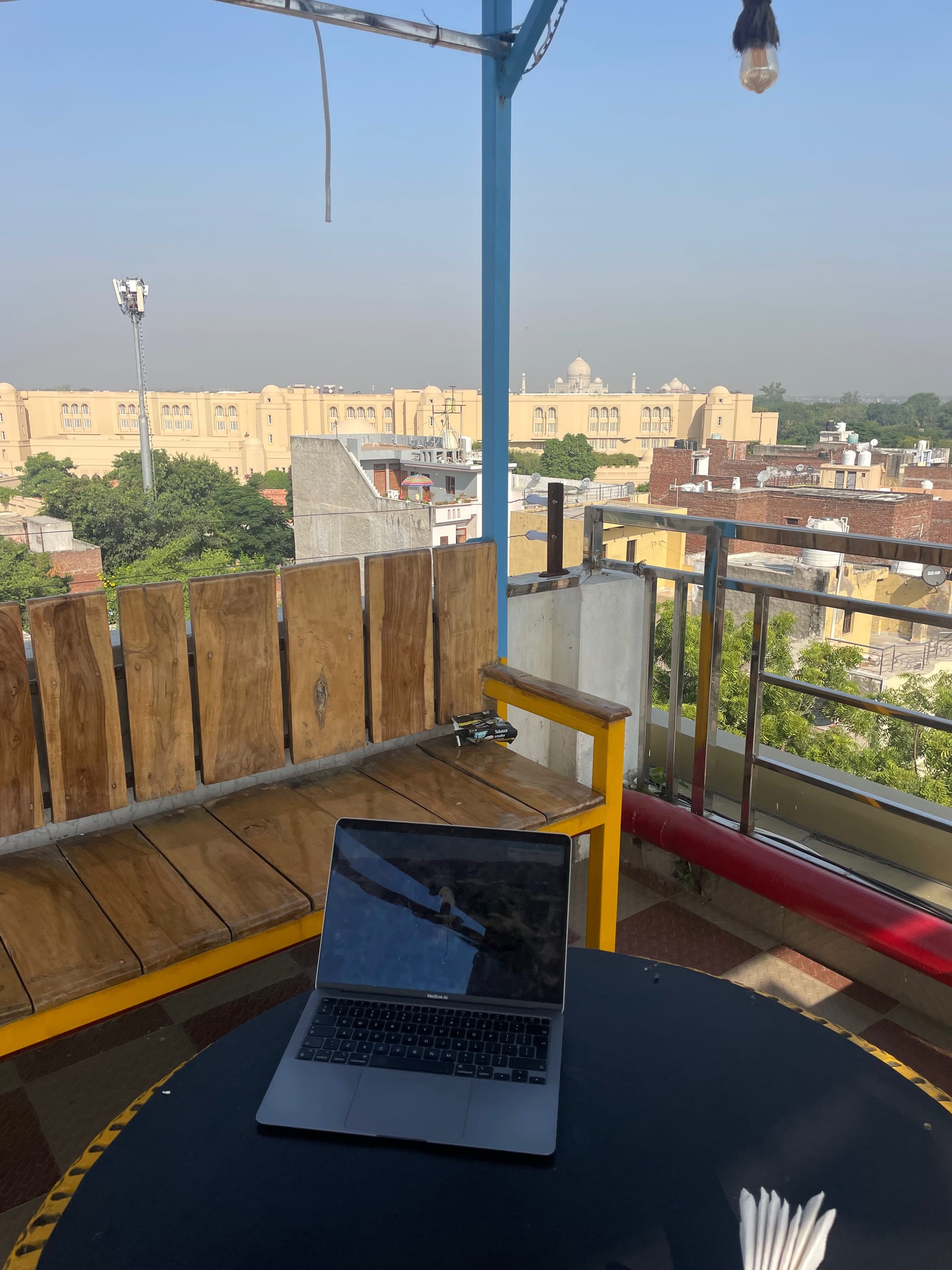
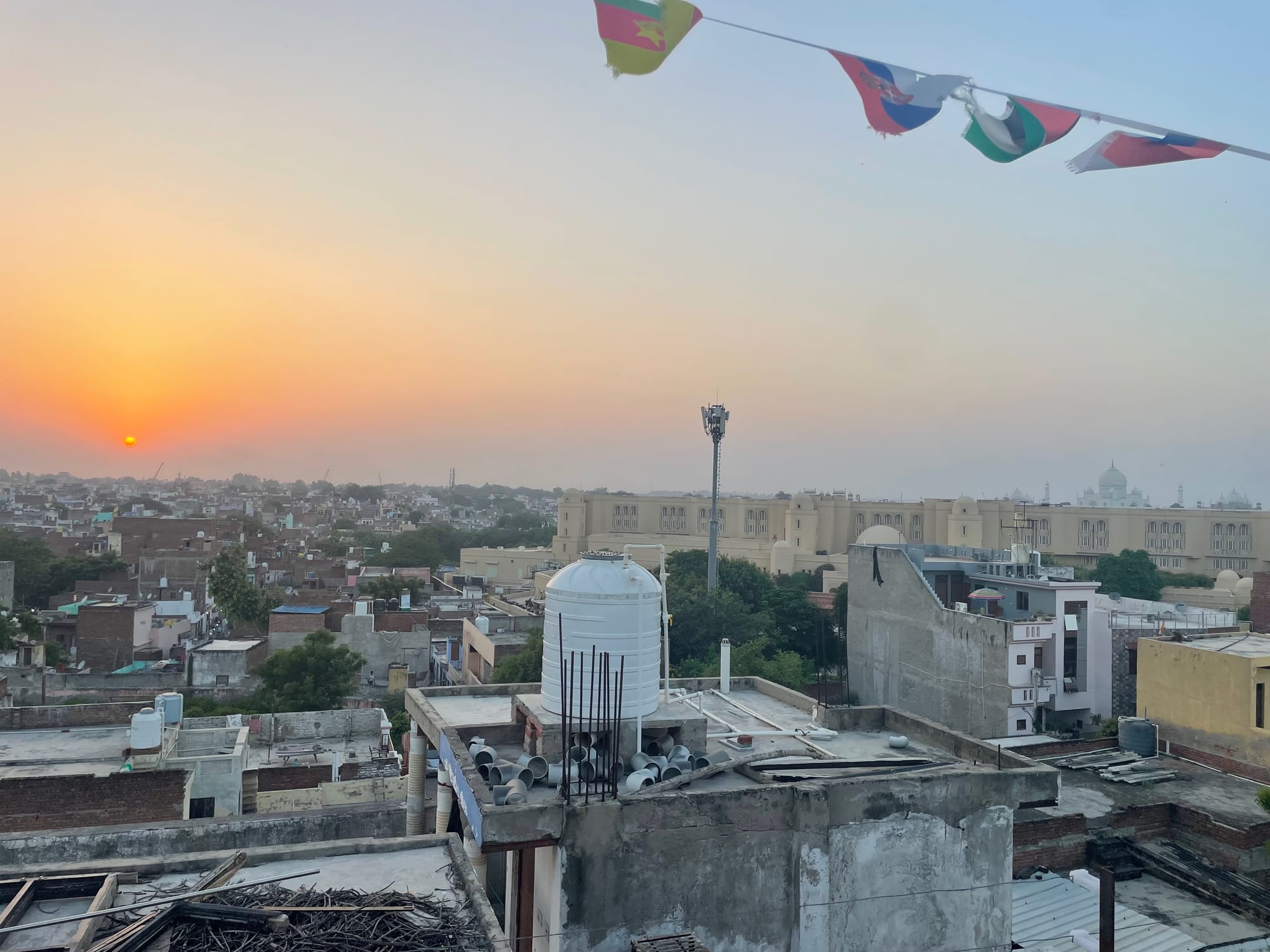
Rooftop views.
The rise of remote work in India has been significant in recent years, supported by a growing number of freelancers, startup founders, and remote workers. India is now the second-largest market for freelancing globally, with an estimated 15 million freelancers, contributing to a $400 billion economy by 2025. The pandemic accelerated this trend, as more companies adopted remote work policies. Additionally, India’s startup ecosystem has seen a remarkable boom, with over 50,000 startups, making it the third-largest in the world. This shift offers opportunities that were previously out of reach due to geographical limitations.
We had a quiet night and got ready for our morning tour of the Taj Mahal. Waking up around 4 AM, we walked to the gates as a group of five. We were slightly discouraged by the number of people, but hey, it’s there for everyone. As soon as we entered the area, we split up. Everyone was in awe of the incredible white marble monument and the artistry it embodies. With the rising sun and the colourful backdrop, it was hard to speak. I just sank into the moment, sat down in front of the building, and kept gazing at it. Many locals attempted the famous Instagram pictures with spilt water and mirror-like reflections.
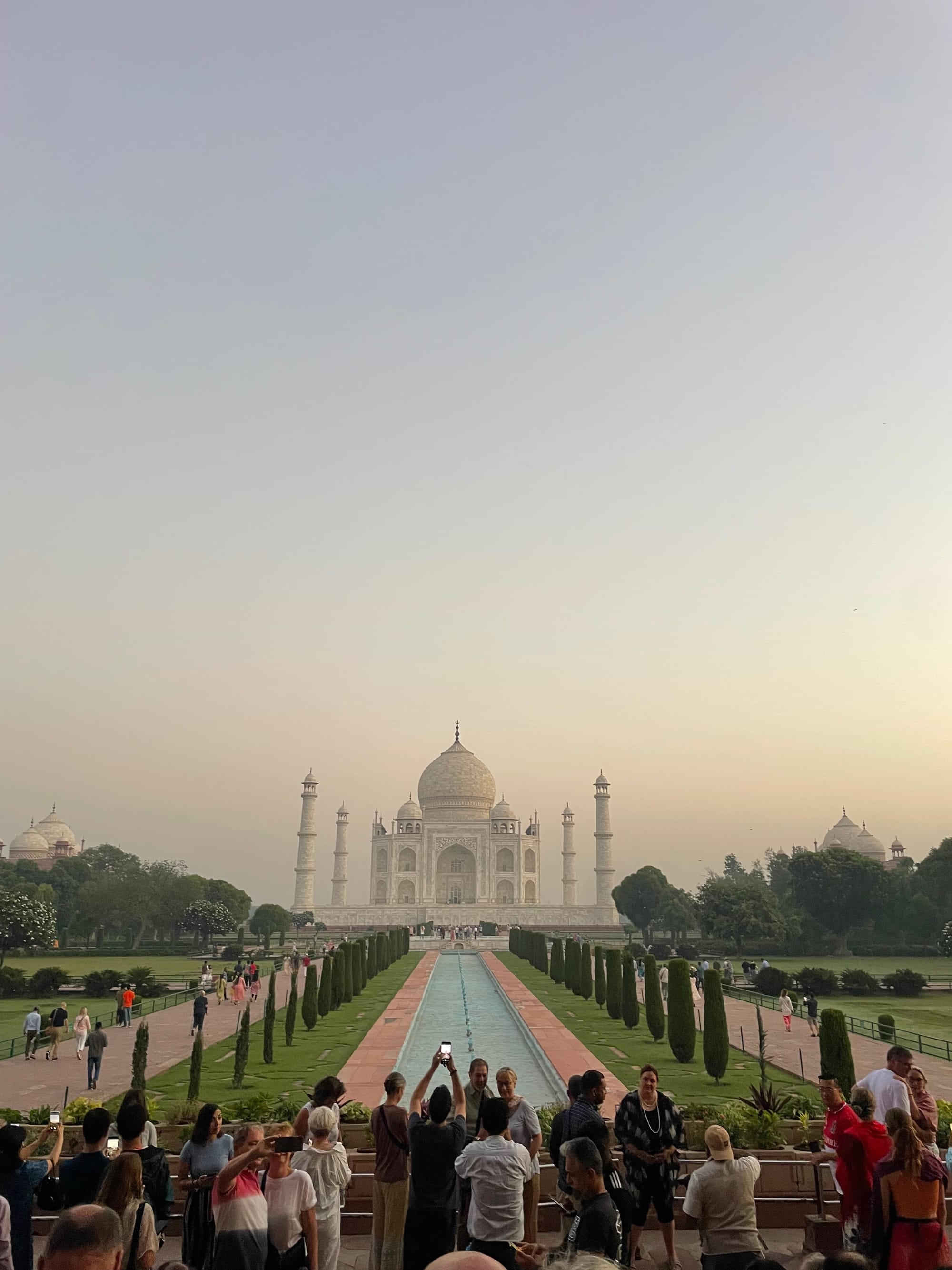


Taj Mahal.
For me, the building itself and the time of day were enough. Travel is magical. Often, you see pictures of certain places, and that forms your idea of them—whether it’s a Lonely Planet guide, a viral Instagram video, or something from your school’s atlas. I’d seen the Taj Mahal in all of those. From a young age, knowing almost nothing about the big world, one picture I always had in my mind of India was this incredibly beautiful palace. Now, I was sitting right in front of it, watching birds playing in the air.
I never want to take travel for granted,ever.
